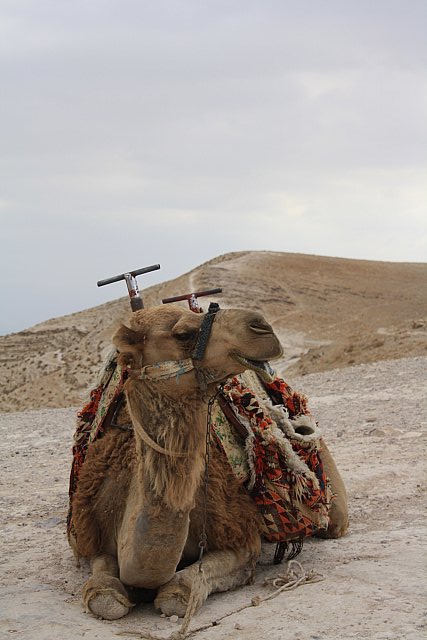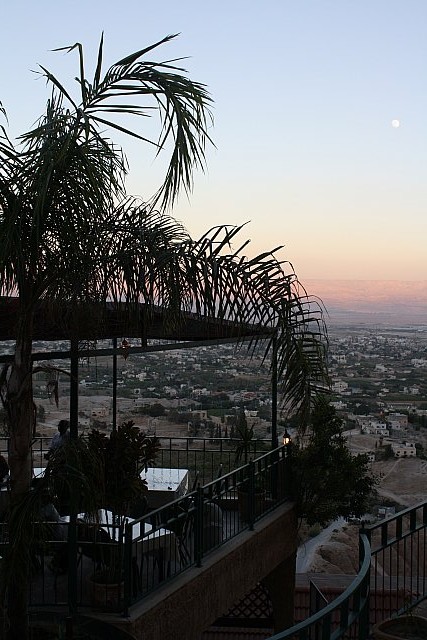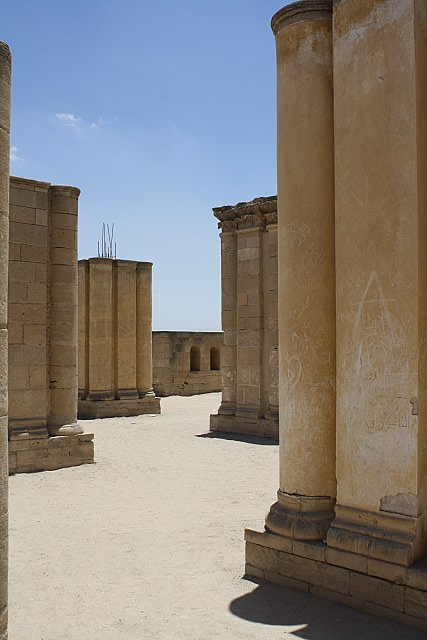Driving down from the Sea of Galilee into Jericho was a study in topography. The Sea of Galilee is refreshing in itself, bright blue and dotted with boats. As you drive toward Jericho and the Dea Sea, you descend steadily toward some of the world’s lowest elevations and windswept deserts that are so reflective of the sun thas it’s a bit blinding. A swim in the Dead Sea provided a fun diversion, but I was more mesmerized by the desert itself.
We visited Hisham’s Palace, an archaeological site that offers a fascinating look at an ornate 8th century ruler’s retreat. Above us in the distance was a Greek Orthodox monastery, Quarantul, that is built into the mountainside and also dates to the 8th century. This mountain is traditionally thought to be the Mount of Tempation, where Jesus rebuffed the entreaties of Satan. That evening we rode the Jericho Cable Car up to that site, where we had a wonderful outdoor dinner on a terrace restaurant just beneath that monastery. Several of us walked up the steep incline to its gate before dinner. The sun set, a nearly full moon took its place,and a breeze blew into our perch on this high cliff face. As the lights of Jericho and distant Jordan gradually appeared, this meal and evening took on a distinctly Mediterranean feel. One of our hosts pointed out Amman, Jordan’s capital–from here it was a bright glow far beyond the mountains across the Dead Sea.
The following morning, we made a brief visit to a desert overlook that displayed some of the Wadi Qelt, a hiking area that I would have loved to had more time for. This is Bedouin country, and there is a half-day walk down into this area from the mountain where we dined that would be time well spent.
Our guide said something the next day that I did not forget: ‘The desert is a very spiritual place.’

A member of our group joined me and another for a steep walk up to the monastery gate

A Bedouin’s camel took a break as we surveyed the vistas of the Wadi Qelt near Jericho

Our perch for the evening was high on the Mount of Temptation

The ruins of Hisham’s Palace date to the 8th century










